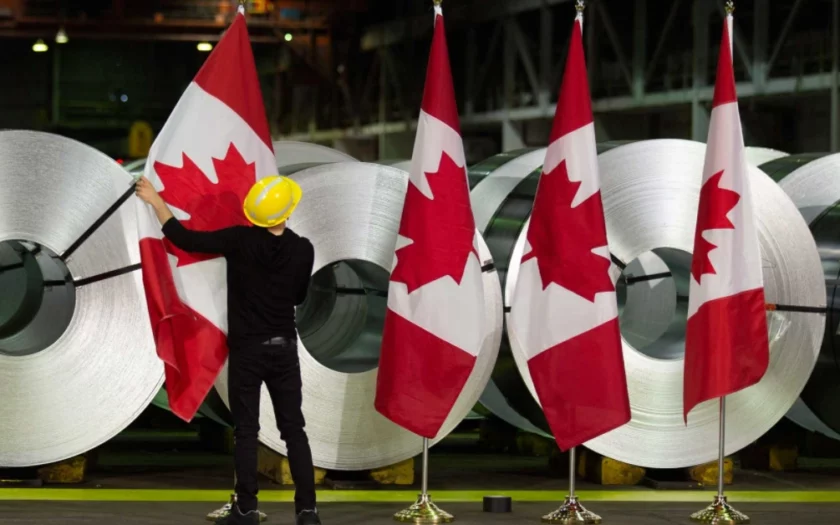Prime Minister Mark Carney has unveiled a sweeping set of new trade measures aimed at protecting Canada’s steel industry from a surge of foreign imports — with a specific focus on steel produced in or involving China. This announcement comes at a pivotal moment, as the global steel market grapples with rising U.S. tariffs and shifting trade alliances.
Table of Contents
Key Measures Introduced to Protect Canada’s Steel Sector
Tariff-Rate Quota Slashed for Non-Free Trade Countries
One of the most significant changes involves a major reduction in the tariff-rate quota for steel imports from countries without a free trade agreement with Canada. The new policy cuts the previous import allowance in half:
- Tariff-rate quota reduced from 100% to 50% of 2024 volumes
- Imports above that threshold will face a 50% duty
This move will primarily impact steel-exporting nations without formal trade pacts with Canada — many of which already struggle to compete with Canada’s robust trade relationships.
China-Linked Steel to Be Penalized Further
In a clear move to push back against Chinese overcapacity, Canada will impose additional duties on 25% of steel imports that contain metal melted and poured in China, even if the final product is shipped from another country.
These changes are set to take effect before the end of July.
Industry Responds: A “Strong Position” in a Volatile Global Market
Catherine Cobden, CEO of the Canadian Steel Producers Association, welcomed the measures, calling China an “egregious” violator in terms of global steel overproduction.
By the Numbers: Canada’s Steel Trade in 2024
- $16 billion in total steel imports
- 50% from the United States
- 10% from China
- $12 billion in steel exports
- 91% went to the U.S.
- 4% to Mexico
Even U.S.-aligned nations with trade agreements will be subject to enforcement:
- These countries will retain their 100% import quota
- But face a 50% tariff on any volumes that exceed that level
U.S. Tariffs and Their Spillover into Canada
Carney acknowledged the rising tension between Canada and the U.S. following President Trump’s decision to double American tariffs on steel and aluminum from 25% to 50%.
He warned that U.S. protectionism is displacing steel products into Canada, overwhelming domestic markets with low-cost alternatives.
Trade Talks Intensify Ahead of August 1 Tariff Hike
The prime minister said negotiations with the U.S. will “intensify” as the deadline for a new 35% U.S. tariff on non-CUSMA-exempt Canadian goods approaches. However, he admitted that some form of tariff is likely unavoidable in any new deal.
He also made it clear that Canada will reassess its current trade deals, especially those related to steel, in light of the evolving negotiations between the U.S. and other global partners.
Political Criticism: Bloc Québécois Slams Carney’s Trade Strategy
Bloc Québécois Leader Yves-François Blanchet criticized Carney for what he called a lack of progress on trade with the United States. He accused the government of giving away too much — including concessions on military spending and Big Tech taxes — with little in return.
Investing in Workers and Innovation
Carney’s announcement also included major domestic investments designed to support the steel industry during this turbulent period.
Worker Support Program
- Up to 10,000 steel workers to receive job training and financial assistance
- Funded by a $70 million employment transition package
Boost to Strategic Innovation Fund
- A $1 billion injection will go to steel-related innovation, modernization, and sustainability
- Aimed at making Canadian steel production more competitive and future-ready
Canadian Steel to Be Prioritized for National Projects
Carney reaffirmed that Canadian steel will be favored for all major national infrastructure projects, reducing dependency on foreign-sourced materials. He framed this as a key step in reinforcing economic sovereignty:
Final Thoughts: A Pivotal Moment for Canada’s Industrial Future
As Canada reorients its trade priorities amid a volatile global economic landscape, the federal government’s steel strategy marks a turning point. With bold tariff actions, targeted penalties for China-linked imports, and major funding for workers and industry, the Trudeau government is staking a firm position in defense of Canada’s domestic production capabilities.
What remains to be seen is how these measures will play out diplomatically — especially in high-stakes negotiations with the United States.
